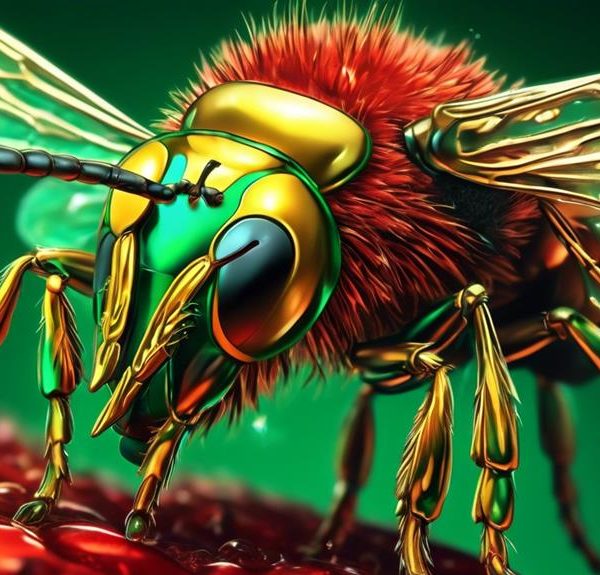Be intrigued by the contrasting characteristics and roles of sweat bees and corn flies in our ecosystem.
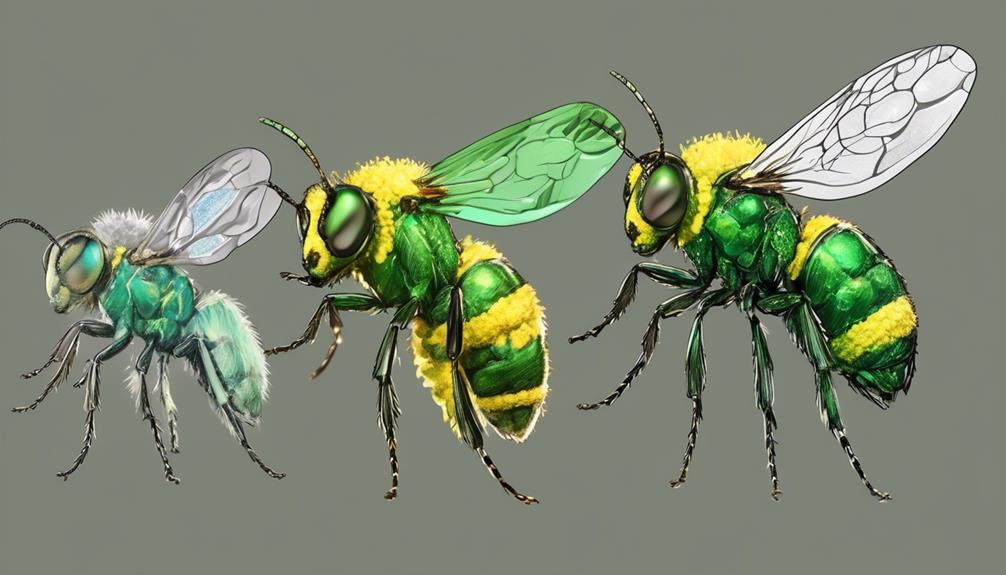
Difference Between Sweat Bee and Corn Fly
In the grand tapestry of nature, you'll find sweat bees and corn flies as distinct threads with unique patterns. When you examine both, you'll discover that despite being diminutive creatures, their differences are quite profound.
From their physical characteristics to their ecological roles, sweat bees and corn flies are as different as night and day. But what exactly are these differences? By the end of this discussion, you'll have a clear picture.
But before we get into that, it might be worthwhile to ask yourself: what do you already know about these two insects?
Key Takeaways
- Sweat bees and corn flies have different physical characteristics, with sweat bees being smaller in size and displaying a wider range of colors compared to the dull greyish-brown color of corn flies.
- Sweat bees are found in various habitats, including forests, deserts, and urban areas, while corn flies are typically found in agricultural regions with corn crops.
- Sweat bees play a vital role in pollination, aiding in the fertilization and reproduction of plants, while corn flies are considered pests in agriculture due to their damage to corn crops.
- Sweat bees are attracted to human sweat and may land on skin to lap up perspiration, while corn flies lay their eggs on corn plants and their larvae feed on corn silks and kernels.
Physical Characteristics of Sweat Bees
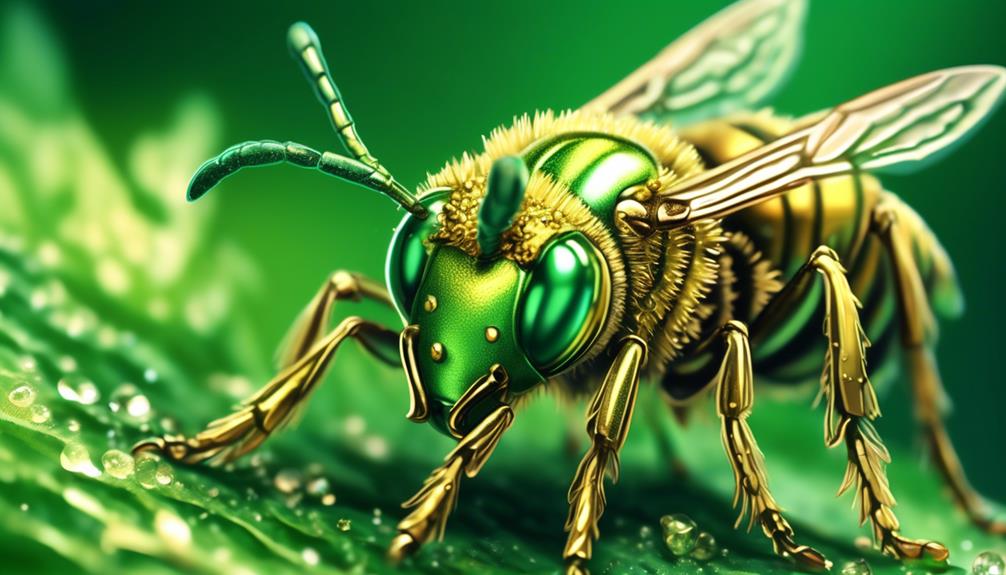
Diving into the physical characteristics of sweat bees, you'll find that these tiny creatures, typically measuring just 3 to 10 millimeters in length, display a diverse range of colors, from metallic blues and greens to more subdued browns and blacks.
Their body shape is elongated with a slight narrowing towards the posterior end, facilitating swift and agile movements. You'll notice that they possess two pairs of wings: forewings larger and hindwings smaller, both exhibiting a delicate, translucent quality. The antennae, a crucial sensory organ, are generally short and bent, aiding in navigation and detection of food resources.
Examine the sweat bee's eyes and you'll find them distinctive, often large and possessing a hexagonal pattern. This sophisticated visual system enables them to identify flowers from considerable distances. The sweat bee's legs, importantly, are equipped with specialized structures for pollen collection, critical for their role in pollination.
Their exoskeleton, made of chitin, is hard and protective, yet lightweight, an evolutionary adaptation that allows them to fly with ease. On closer inspection, you'll also find their bodies covered in fine hairs, a characteristic that aids in pollen collection and temperature regulation.
Identifying Features of Corn Flies
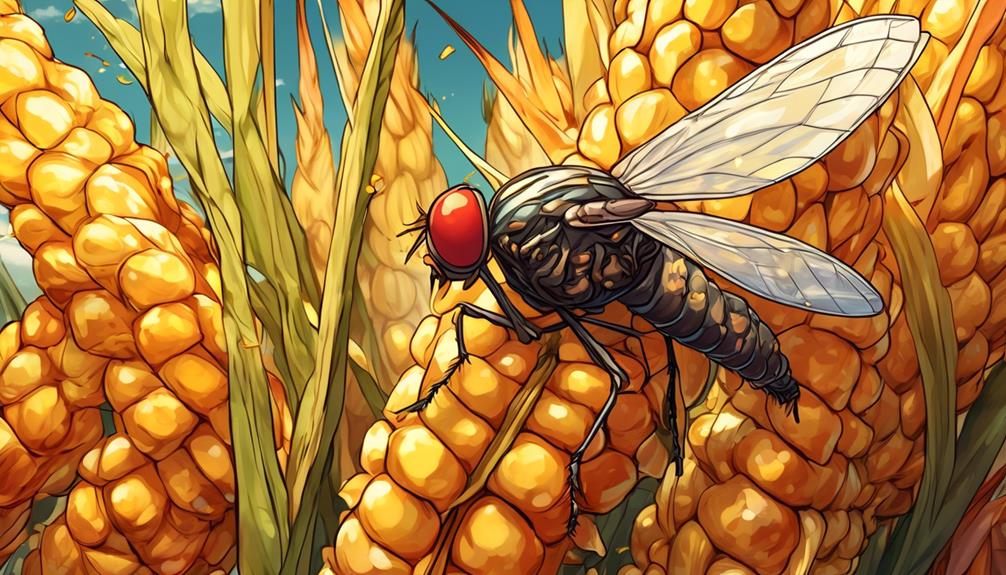
Shifting our attention from the metallic hues and agile form of sweat bees, let's now focus on the identifying features of corn flies, another fascinating specimen in the insect kingdom.
Unlike sweat bees, corn flies don't have iridescent bodies. Instead, they showcase a dull, greyish-brown color, making them blend in with their preferred environment—crops and vegetation. They're small and compact, typically measuring between 3 to 6 millimeters in length. Look for short, bristle-like antennae and a humped back, which are key identifying features.
A closer inspection reveals their wings are typically clear or lightly clouded. They're veined and held over the body when at rest, giving the insect a streamlined appearance. Their eyes, often a vibrant red, provide a stark contrast to their muted body color.
In terms of behavior, corn flies tend to be more stationary compared to sweat bees. They're often found resting on leaves or stems, instead of buzzing around flowers. Lastly, they're known for their crop damage, especially to corn. Their larvae feed on the plant roots, causing significant harm.
Understanding these traits will help you distinguish corn flies from other insects, including the visually distinct sweat bees.
Sweat Bee Behavior and Habitat

Ever wonder where you'd likely encounter a sweat bee, or what activities they engage in during their typical day? Sweat bees thrive in a variety of habitats, from forests to deserts, and they're even abundant in urban areas. These hard-working insects are solitary by nature, but they can occasionally form semi-social colonies.
During the day, sweat bees are busy foraging for nectar and pollen. They're vital pollinators, helping plants reproduce by transferring pollen from the male parts of a flower to the female parts. Interestingly, sweat bees have a unique behavior not shared by many bee species: they're attracted to human sweat. They'll often land on your skin on a hot day, lapping up your perspiration for its salt content.
At night, sweat bees return to their nests, which they build in the ground. They prefer sandy soils where they can easily dig. The female sweat bee lays her eggs in the nest, providing them with pollen and nectar as food. Here, the life cycle of the sweat bee begins anew, as larvae hatch and grow into the next generation of these industrious, sweat-loving insects.
Corn Fly Lifestyle and Environment

Just like sweat bees, corn flies lead an intriguing life, adapting to their environment in a unique way that contributes to the ecosystem. They are typically found in the agricultural regions that have corn crops, as their larvae feed on the corn silks and kernels. This environment provides them with the nourishment they need to mature and reproduce, ensuring the survival of their species.
Corn flies display fascinating behaviors. They lay their eggs on the corn plants, which then hatch into larvae. These larvae are known to be voracious, feeding aggressively on the corn, which can sometimes lead to extensive damage to the crops.
Here's a table that highlights some key aspects of the corn fly's lifestyle and environment:
Aspect | Details | Impact |
|---|---|---|
Habitat | Agricultural regions with corn crops | Determines the corn fly's geographical distribution |
Feeding | Larvae feed on corn silks and kernels | Can cause extensive damage to crops |
Reproduction | Eggs laid on corn plants | Ensures survival of species |
Understanding these aspects of the corn fly's lifestyle and environment can help in developing effective pest control strategies. This way, you can protect your crops while also respecting the role of these insects in the ecosystem.
Ecological Roles: Sweat Bees Vs. Corn Flies
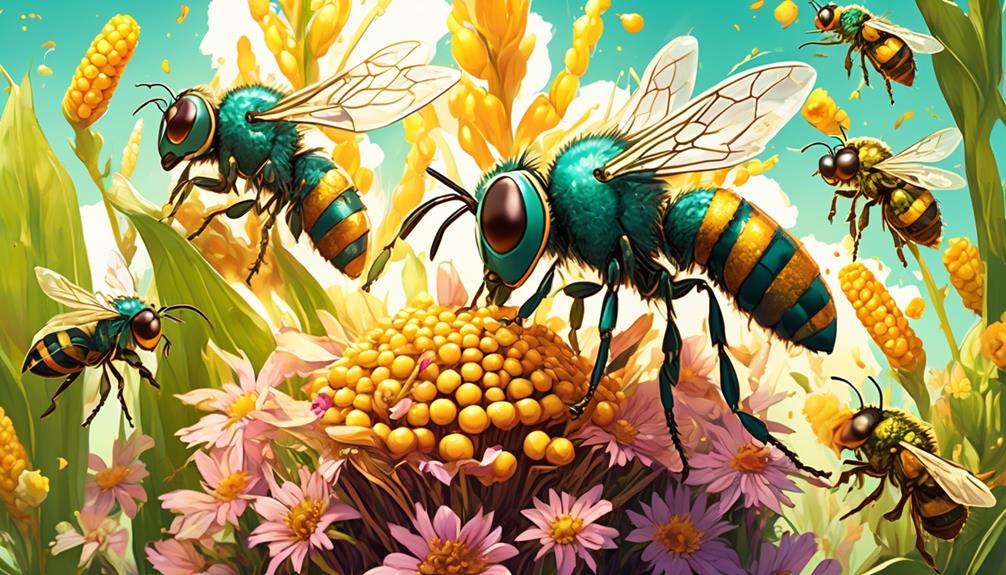
Now that we've explored the individual lifestyles and environments of sweat bees and corn flies, let's compare their ecological roles and understand how their behaviors impact the broader ecosystem.
Sweat bees play a vital role in pollination. As they move from flower to flower for nectar, they unintentionally transfer pollen grains, aiding in the fertilization and reproduction of plants. This behavior significantly impacts the health and diversity of ecosystems, boosting agricultural productivity and the growth of wild plants.
On the other hand, corn flies, also known as corn borers, have a different ecological role. They're considered pests in the agricultural world. Their larvae feed on corn plants, damaging the plant's internal structure and reducing yield. This behavior can result in significant economic losses for farmers.
However, corn flies also contribute to the food chain by serving as a food source for natural predators like birds and insects. This role helps maintain a balance in the ecosystem.
Conclusion
In sum, you'll note sweat bees and corn flies differ significantly. From physical traits to habitats, these bugs aren't identical.
Sweat bees, drawn to human perspiration, play vital roles in pollination.
Conversely, corn flies, found in agricultural areas, can be pests but also contribute to decomposition.
Understanding these differences fosters an appreciation for their unique ecological roles.
So, next time you spot one, remember, it's either a sweat bee's pollination process or a corn fly's contribution to the natural cycle.

